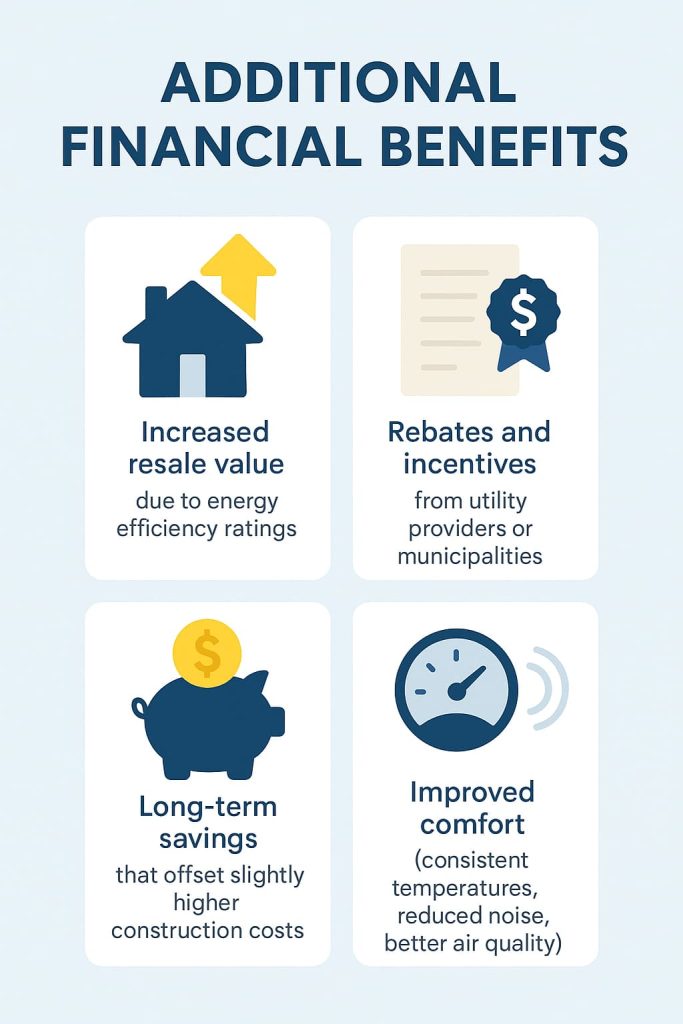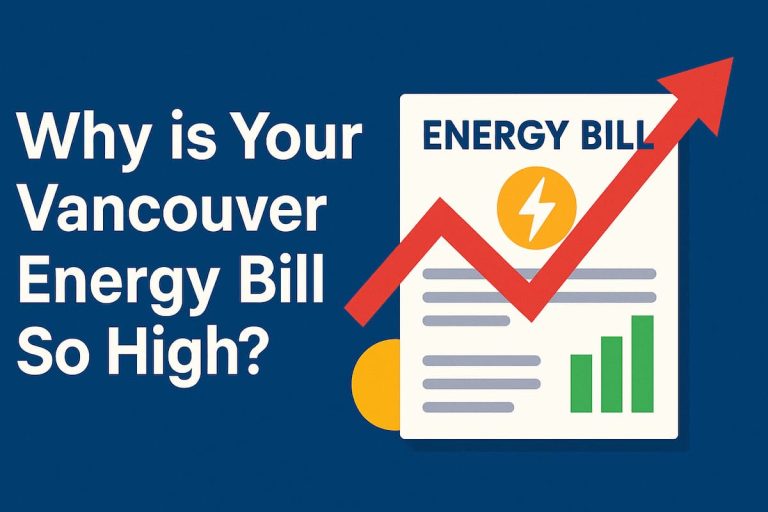Energy bills are rising. For many homeowners and builders in British Columbia, that raises an important question: how can a home be designed to save energy—and money—long term?
The BC Energy Step Code provides a roadmap for reducing energy use in buildings. By following this structured approach, homeowners can experience lower utility bills, greater comfort, and long-term savings.
Let’s explore how this code works—and how it helps your wallet.
What Is the BC Energy Step Code?
The BC Energy Step Code is a provincial standard that moves beyond traditional building code requirements by focusing on measurable energy performance.
Instead of prescribing how to build, it sets performance targets. Builders can meet these targets using any design or materials they choose.
The Step Code is divided into five steps, each representing increasing levels of energy efficiency.
Overview of Steps:
| Step | Description | Approx. Energy Savings vs. Base Code |
|---|---|---|
| 1 | Enhanced compliance with base code | Minimal |
| 2 | Moderate energy efficiency | ~10% |
| 3 | Improved building envelope & systems | ~20% |
| 4 | High-performance design | ~40% |
| 5 | Net-zero energy ready | ~80–100% |
By 2032, all new buildings in BC must meet Step 5 standards.
Why Energy Efficiency Matters for Your Bills
Your energy bill is driven by how much heating, cooling, lighting, and appliance energy your home consumes. Poorly insulated walls, drafty windows, and inefficient heating systems can all lead to high monthly costs.
Energy-efficient homes reduce these losses by:
-
Keeping conditioned air inside (less heat escapes in winter or enters in summer)
-
Using mechanical systems that consume less electricity and gas
-
Requiring less energy overall to maintain a comfortable indoor environment
How the Step Code Reduces Your Utility Costs
The Step Code focuses on several performance areas that directly impact energy use and, in turn, monthly utility bills.
1. Airtight Construction
-
Limits heat loss and reduces the energy needed to keep the home warm or cool
-
Lower air leakage means heating systems don’t work as hard
2. Improved Insulation and Building Envelope
-
Better insulation in walls, roofs, and floors traps heat more effectively
-
Helps maintain stable indoor temperatures
3. Energy-Efficient Mechanical Systems
-
Includes heat pumps, high-efficiency furnaces, and ventilation systems
-
These systems consume less energy and operate more effectively
4. Performance Testing and Modeling
-
Builders use energy modeling software during design
-
Homes are tested using blower door tests to measure airtightness
-
Ensures that the home performs as expected
Result:
| Feature | Benefit to Utility Bills |
|---|---|
| Airtight construction | Less heat loss, lower heating costs |
| High-performance insulation | Reduced need for HVAC usage |
| Efficient mechanical systems | Lower electricity/gas consumption |
| Energy modeling | Optimized design = less waste |
Additional Financial Benefits
In addition to lower energy bills, Step Code homes may offer:
-
Increased resale value due to energy efficiency ratings
-
Rebates and incentives from utility providers or municipalities
-
Long-term savings that offset slightly higher construction costs
-
Improved comfort (consistent temperatures, reduced noise, better air quality)

Getting Started
If you’re building a new home or planning a major renovation, understanding the Step Code is essential for energy savings.
To learn how to design or build an energy-smart home, visit Monolith Housing’s BC Step Code advisor.
Conclusion
The BC Energy Step Code isn’t just a regulatory requirement—it’s a smart investment in your home’s future. By building to higher Step levels, you can enjoy:
-
Lower monthly utility costs
-
A more comfortable, healthier living environment
-
Long-term financial and environmental benefits
Monolith Housing Solutions is here to support your journey toward efficient, future-ready homes. Whether you’re a builder or homeowner, we provide tools, insights, and guidance to help you make informed decisions that save energy—and money.
Frequently Asked Questions
1. What exactly is the BC Energy Step Code?
It’s a provincial building standard focused on energy performance rather than prescriptive construction methods.
2. How does it impact the energy performance of a new home?
It ensures that homes are designed, built, and tested for airtightness, insulation, and efficient energy systems.
3. What are the long-term cost benefits of Step Code homes?
Homeowners can save 10–40% on energy bills, depending on the Step level.
4. Is Step Code compliance mandatory everywhere in BC?
Municipalities can choose which Step to require. By 2032, all new buildings must be Step 5 compliant.
5. Do Step Code homes cost more to build initially?
Yes, but the increase is modest (typically 2–5%) and often offset by long-term savings.
6. What’s the difference in energy savings between Step 2 and Step 4?
Step 2 offers around 10% savings, while Step 4 can deliver up to 40% energy use reduction.
7. Can I apply the Step Code to a renovation project?
It typically applies to new construction, but deep retrofits can benefit from Step Code principles.
8. Are there incentives or rebates for Step Code-compliant homes?
Yes, utility companies and local governments may offer financial incentives for high-efficiency homes.
9. How do I know what Step applies in my municipality?
Check with your local government or building department for Step Code adoption details.
10. What professionals do I need to work with to meet Step Code standards?
You’ll likely need an Energy Advisor, architect, and a builder familiar with energy-efficient practices.




